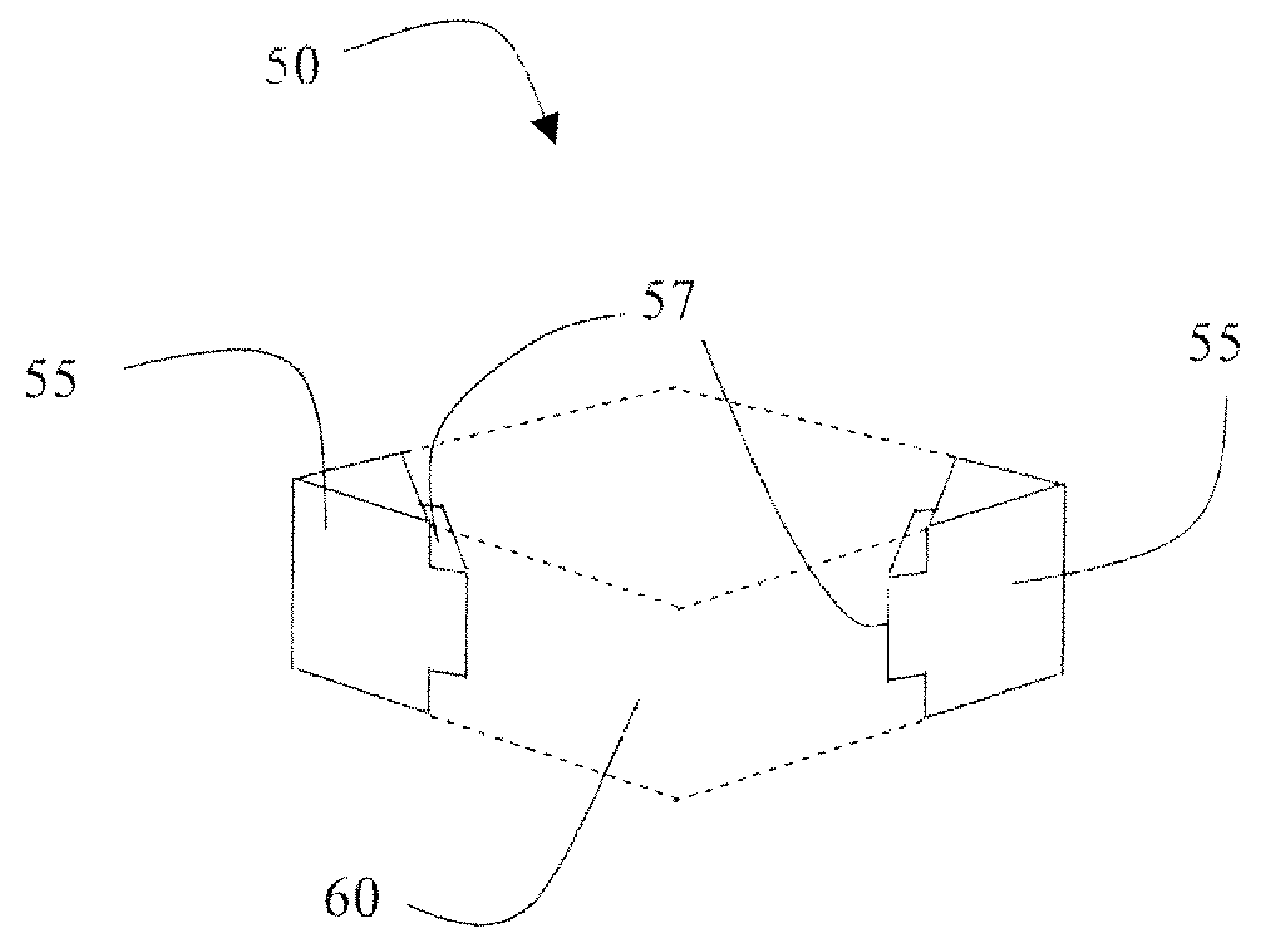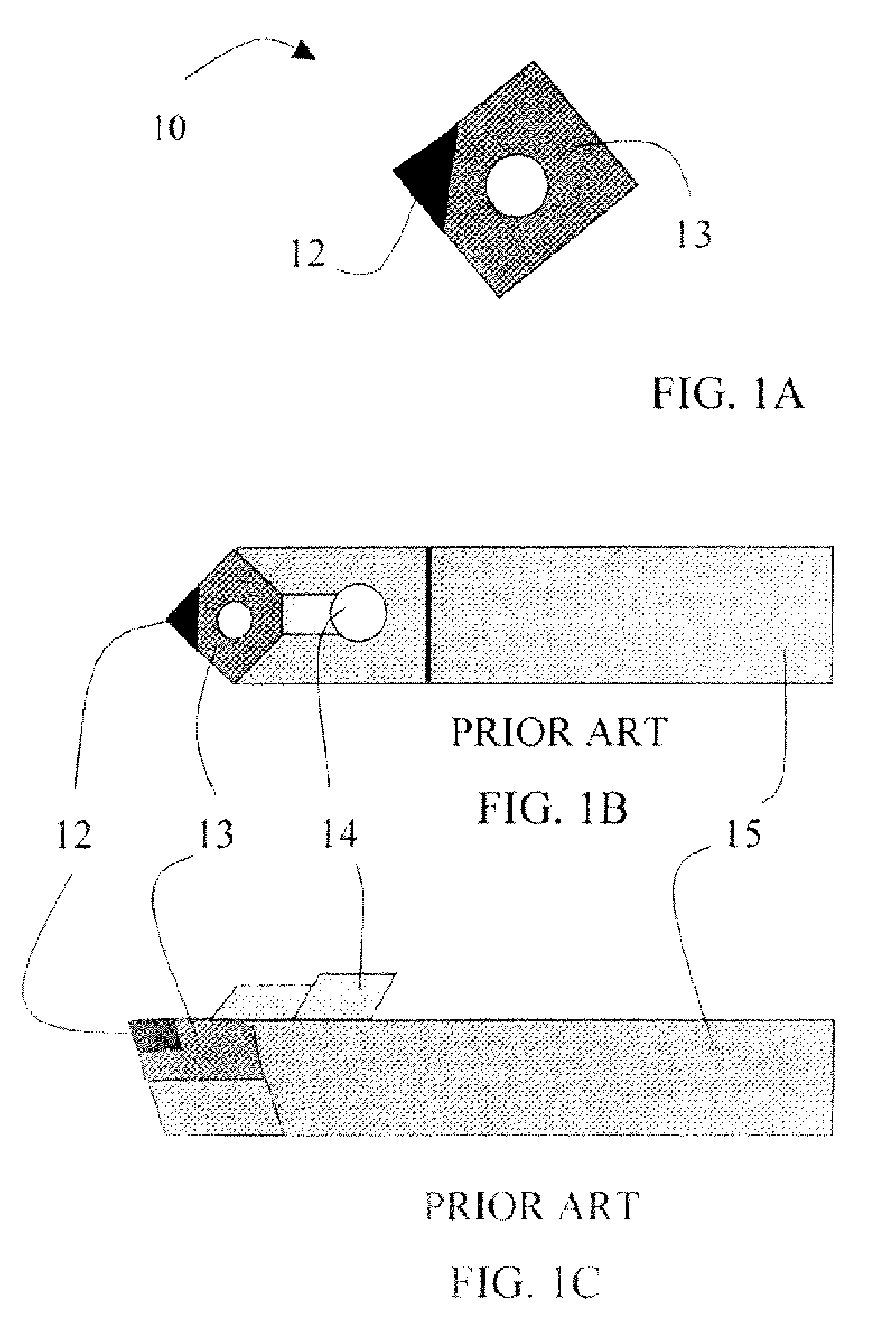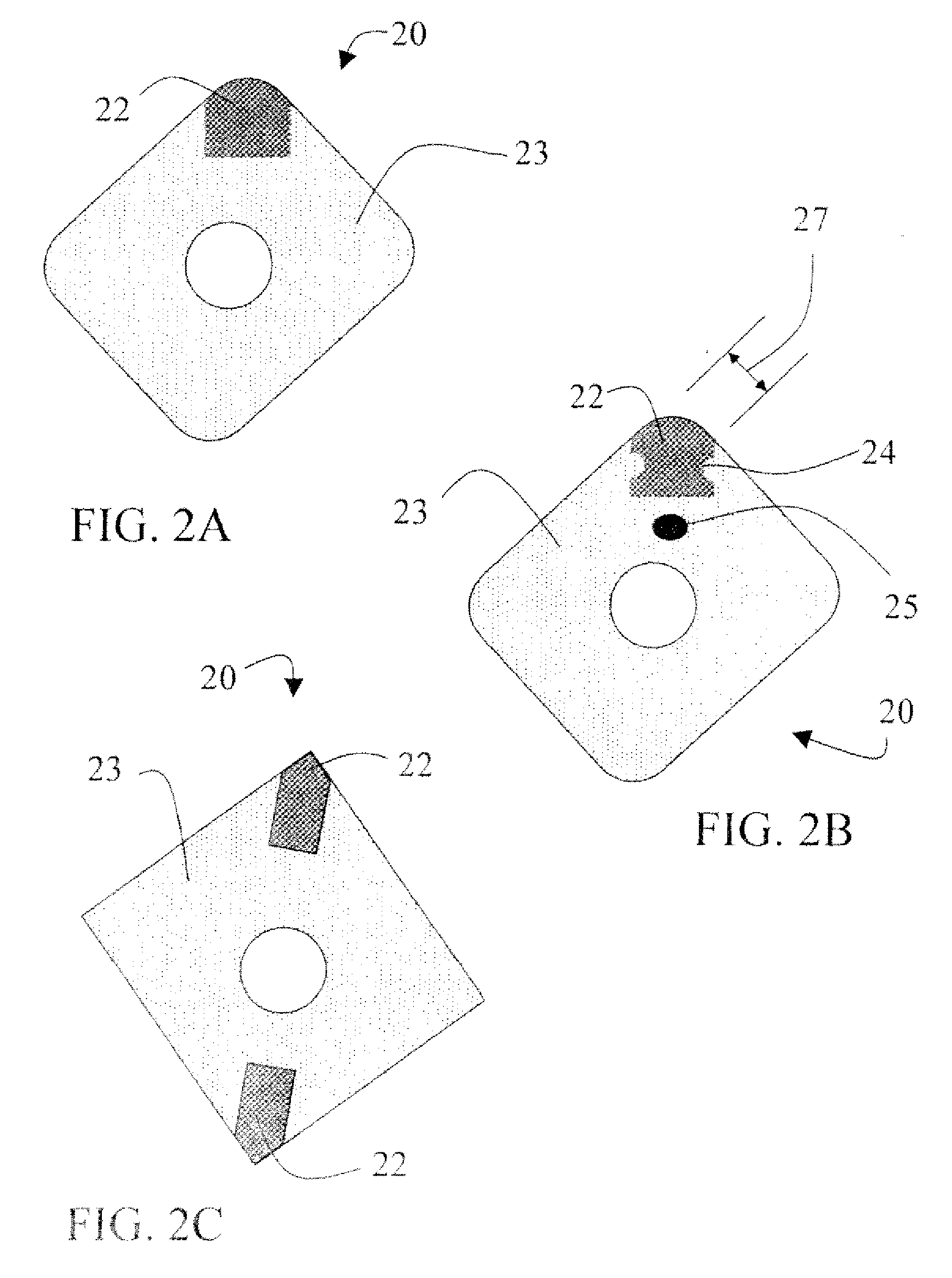Cutting tool insert with molded insert body
a technology of insert body and cutting tool, which is applied in the direction of gear teeth, manufacturing tools, manufacturing apparatus, etc., can solve the problems of labor-intensive brazing process, process, and inability to use superabrasives in many applications, and achieve labor-intensive brazing process, labor-intensive and often costly problems
- Summary
- Abstract
- Description
- Claims
- Application Information
AI Technical Summary
Benefits of technology
Problems solved by technology
Method used
Image
Examples
example 1
[0078]Diamond-shaped CNUA43 cutting inserts were molded by the method described above using a thermosetting melamine phenolic resin (Plenco grade 0641 glass-fiber and mineral filled). A hard steel mold containing spring-loaded pins was used. The abrasive tip(s) were HTM 2100 material (Diamond innovations Inc.). HTM 2100 comprises 0.5-1 mm of hard PCBN composite bonded to about 1.5 to 2 mm of sintered tungsten carbide. The 80 degree trapezoidal cutting blanks were EDM Cut with radius at the cutting blank to 0.008″ to provide a seal for the flowable resin. The cutting blanks were prepared to provide adequate contact with the curable resin to improve adhesive attachment. The cutting blanks were placed into the cavity comprising the mold and located via small pins. Preheated resin was then pressurized into the mold and flowed over and around the cutting blanks. A seal was made and pressure increased. The mold was heated and time was allowed for complete mold fill, removal of air, resin ...
example 2
[0082]Table 1 illustrates a table of cutting tool performance as measured by inches of steel cut divided by 0.001″ inches of flank wear to the insert cutting blank. Inserts of the present invention prepared from PCBN composite abrasive edges and filled melamine phenolic resin were tested against brazed inserts in continuous facing of hard 52100 and notched hard 4340 steels. In all cases, no cutting blank attachment issues were identified. The cutting blank material, not the molded body material, determined insert performance.
TABLE 1PerformancePerformance(in / 0.001″ flank wear)(in / 0.001″ flank wear)Cutting ConditionsInsert-Molded CuttingStandard Cuttingspeed (feet / min); feedTool InsertTool InsertSteel Type(in / rev); depth-of-cut (in); dry58366897 4340361; 0.005; 0.0160777153HRC 48–52V-notched(interruption)60728552HRC 48–52361; 0.005; 0.01V-notched(interruption)96371179552100324; 0.003; 0.01HRC58–60Facing10309826752100324; 0.003; 0.01HRC58–60Facing95639962
example 3
[0083]The above ground plastic molded insert was metallized with about 2 microns of electroless nickel via a standard Solution process by Diamond Innovations, Inc. The electroless nickel coating was confirmed conductive. In a machining test, the metal hard coat as a “hard shell” on the plastic preventing hot chips from eroding the plastic,
PUM
| Property | Measurement | Unit |
|---|---|---|
| cutting speeds | aaaaa | aaaaa |
| temperatures | aaaaa | aaaaa |
| temperature | aaaaa | aaaaa |
Abstract
Description
Claims
Application Information
 Login to View More
Login to View More - R&D
- Intellectual Property
- Life Sciences
- Materials
- Tech Scout
- Unparalleled Data Quality
- Higher Quality Content
- 60% Fewer Hallucinations
Browse by: Latest US Patents, China's latest patents, Technical Efficacy Thesaurus, Application Domain, Technology Topic, Popular Technical Reports.
© 2025 PatSnap. All rights reserved.Legal|Privacy policy|Modern Slavery Act Transparency Statement|Sitemap|About US| Contact US: help@patsnap.com



